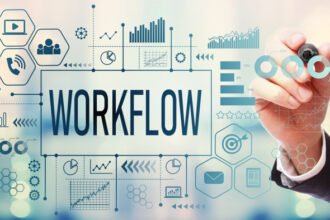Big data analytics have proved an excellent tool for many applications, from evaluating an organization’s profitability to determining optimal investment strategies. Unfortunately, one major hurdle that objective data analysis hasn’t been able to overcome, even with all the advances in data-related technology in recent years, is managing human relationships.
It’s hard to base your opinion of an employee based solely on performance numbers. It’s also impossible to tell whether you could fall in love with someone based on how an algorithm matches you up (though plenty of entrepreneurs have tried).
But a revolution in data processing could occur soon—one that focuses more on qualitative human characteristics, and how humans interact with one another on an almost subjective level.
The Demand
A big reason we’re seeing increased attention to this kind of analysis is the sheer volume of demand. From a business perspective, managers need to know how to understand and coordinate their employees better, and landlords need to stay on good terms with their tenants.
From a personal perspective, people are eager (if not desperate) to improve their friendships and romantic connections. Given such a push from all sides, data scientists and engineers are inching forward on projects that could use data to handle these complex situations.
How Data Could Improve Relationships
How could data tackle an issue that’s historically been impossible to reduce to objective numbers?
- Data volume. Sometimes, an increase in the sheer volume of data is enough to gain a better understanding of how humans work together and evaluate one another. After collecting information across hundreds of dimensions, even a rudimentary algorithm should be able to pinpoint certain metrics that predict human behavior, or at least dictate the quality and shape of a relationship.
For example, significant data and research could uncover a few hundred factors that increase the likelihood of divorce. Then the presence or absence of these factors could be used to evaluate the relative strength of a relationship, even in its earliest stages.
- Predictive AI. Predictive AI employs multiple data-related disciplines, including data mining, statistics, modeling, and machine learning to arrive at predictions about complex systems. Only at the intersection of these technological breakthroughs could we produce a system sophisticated enough to make predictions about a person’s future behavior.
Currently, big data allows us to make sweeping predictions about how a group will, on average, behave; but the smaller the group, the more unpredictable the variables become.
- “Subjective” data points. We’ll also see the prioritization of more subjective data points. Though most systems still require some way to make subjective characteristics countable or measurable, if we want to make predictions about human behavior and improve our relationships with others, we need to understand the complexities of personality traits and emotional states.
In many ways, this is the most complicated area to master in managing human relationships There isn’t always a straightforward relationship between variables and outcomes when it comes to human behavior.
Plus, we aren’t naturally attuned to evaluating subjective factors in an objective context that’s easy for predictive analytics algorithms to parse.
- Individual and organizational distinctions. Occasionally, individual relationships can undermine—or at least complicate—organizational goals. Right now, much of our analytics technology is best applied to studying large groups of subjects, whether that’s hundreds of employees in an organization, or many organizations in a field.
The transition to using data for management of human relationships will require us to “zoom in” on individuals, which will require new ways of processing data—and far more intensive ways to collect it.
Some key challenges await us on this front, but the future of data analytics will almost certainly focus on the power and management of individual human relationships. We’re already seeing the beginnings of systems powerful enough to make predictions about previously unpredictable data sets.
With continued demand for improvement from both businesses and consumers, we’re unlikely to see the momentum slow down any time soon. In a matter of years, we may have access to software that makes us better managers, better landlords, better negotiators, and even better friends.









